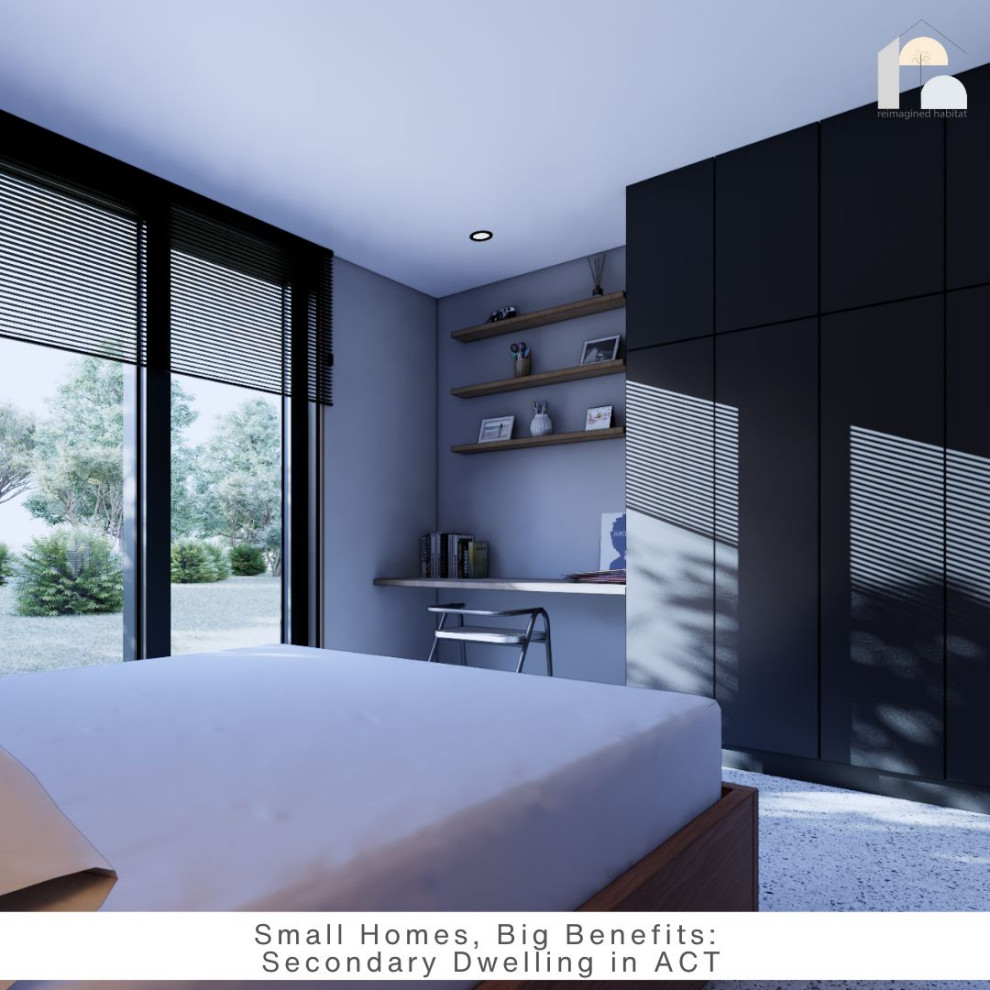Small Homes, Big Benefits: Secondary Dwelling in ACT

Like many parts of Australia, the ACT is facing a housing crisis, with demand outpacing supply and affordability becoming a growing concern. As the cost of living rises and housing options become more limited, secondary dwelling, or secondary residence as they are known in the ACT, offer a smart way to maximise existing space, provide additional housing, and create a more adaptable home for changing family needs.
Building a secondary residence—often called a granny flat—is an excellent way to:
- Keep family members close while ensuring independence.
- Generate extra income through rental opportunities.
- Provide flexible, affordable housing options in your community.
- Maximise the potential of your existing block.
- Adapt to changing household needs, such as ageing parents or young adults seeking their own space.
Why Choose a Net Zero Habitat Prefabricated Home for Your Secondary Residence?
If you’re looking for an energy-efficient, comfortable, and healthy secondary residence in the ACT, our net zero habitat range offers the perfect solution. Our pre-designed, prefabricated homes are built with sustainability in mind, ensuring they provide high-performance living while reducing energy costs.
Check out our range here. (insert link)
Key Benefits of Our Net Zero Habitat Homes:
✅ Energy Efficiency – Superior insulation, passive design principles, and high-performance materials reduce reliance on heating and cooling.
✅ Healthy Living – Non-toxic materials and excellent ventilation create a comfortable indoor environment.
✅ Prefabricated for Quality & Speed – Built off-site for precision and quick installation, reducing on-site disruption.
✅ One & Two-Bedroom Options – Choose from our versatile designs, perfect for extended family, rental income, or downsizing.
Secondary Residences in the ACT: What You Need to Know
In the Australian Capital Territory (ACT), secondary residences offer a great opportunity to create additional living space on your property. However, they come with specific regulations and requirements. Here’s what you need to know before planning your secondary residence:
Key Facts About Secondary Residences in the ACT
Definition and Size Limitations
- A secondary residence is a self-contained dwelling located on the same block as the primary residence.
- The maximum allowable gross floor area for a secondary residence is 90 square metres, which is larger than Victoria’s limit of 60sqm.
Block Size Requirements
- The minimum block size required to construct a secondary residence is 500 square metres.
Accessibility Standards
- Secondary residences must be designed to be adaptable for individuals with disabilities or impaired mobility, following Australian Standard AS 4299 (Adaptable Housing).
Approval Process
- All secondary residences require Development Approval from the ACT Planning Authority.
- Public notification is part of the approval process, meaning neighbours will be notified, and in some cases, signage may be required.
Ownership and Subdivision
- Secondary residences cannot be subdivided or sold separately from the main home.
- Separate titling is not allowed under the Unit Titles Act 2001.
By choosing a net zero habitat home, you’re investing in a future-proof, sustainable, and high-quality secondary residence that enhances comfort while lowering your environmental impact.
Interested in learning more? Get in touch to explore our designs and find the perfect fit for your property!
If you're located in Victoria, check out the regulations for a secondary home here.
If you're based in NSW, please click here for more information on secondary dwelling requirements.
Disclaimer: Regulations around secondary dwellings can vary depending on your local council, site conditions, and planning overlays. While we’ve done our best to summarise the general rules, we always recommend speaking with your local council and consulting a qualified designer, architect, or builder to confirm what's possible on your specific property.
